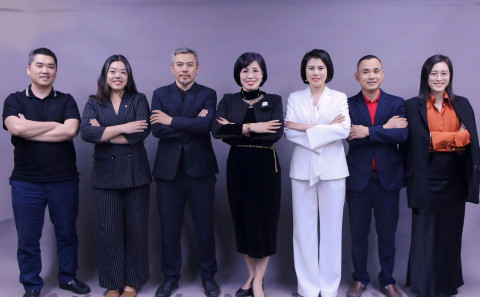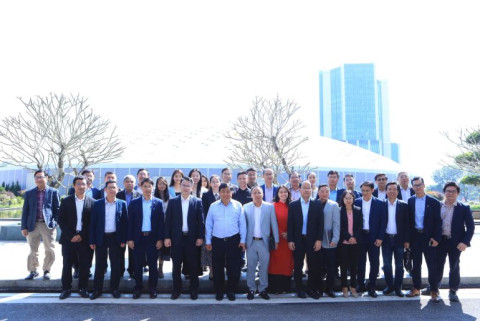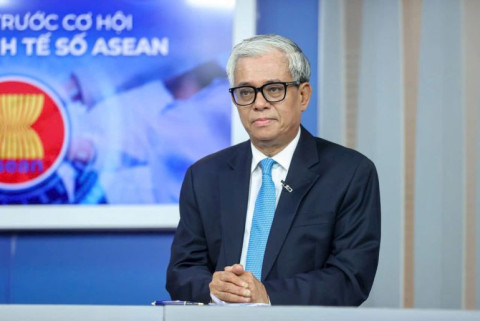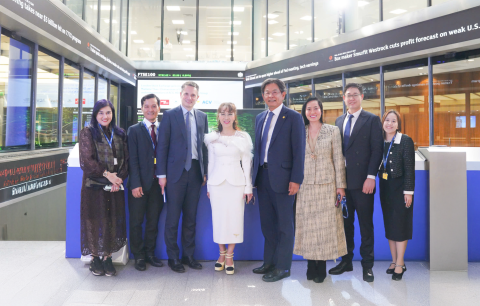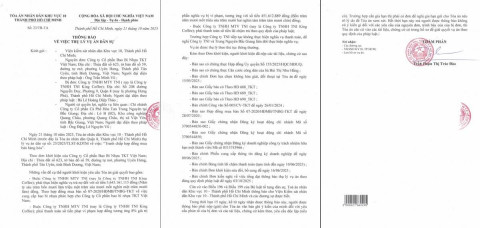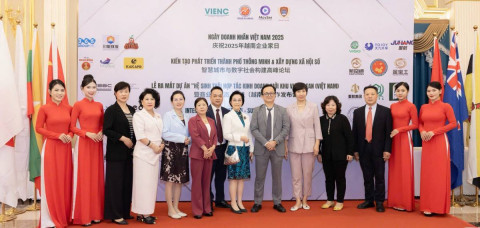Accelerating Green Finance Activities for Sustainable Development Goals
- 173
- Business
- 20:42 28/12/2023
DNHN - In the aftermath of the United Nations Framework Convention on Climate Change (COP28) in Dubai, United Arab Emirates (UAE), many Vietnamese local banks are increasing their efforts in green lending.

Banks Endorsing Net Zero Objectives
Significantly, collaborations between Japan's MUFG Bank and VietinBank, Standard Chartered Bank and BIDV, and BIDV and ADB seek to advance and mobilise sustainable financing, supporting the realisation of sustainable development objectives and ESG (environmental, social, and governance) practices in Vietnam. For example, MUFG has pledged to assist VietinBank in securing up to $1 billion for sustainable development initiatives that advance a circular economy and provide social and environmental advantages.
The bank would strengthen its assistance to Vietnam in terms of capital mobilisation, luring green finance, and fostering green growth in line with the Net Zero commitments set at COP 26, according to Standard Chartered Group CEO Bill Winters. This will help Vietnam develop, which will include creating a market for carbon credits and green money.
In keeping with reaching Net Zero goals, a few of banks have moved quickly. NamA Bank is measuring CO2 emissions at several business units and has implemented a White Paper on Carbon Neutrality as a pilot project. The objective of this programme is to evaluate, quantify, and compute carbon dioxide emissions in green credit products and incorporate them into day-to-day operations.
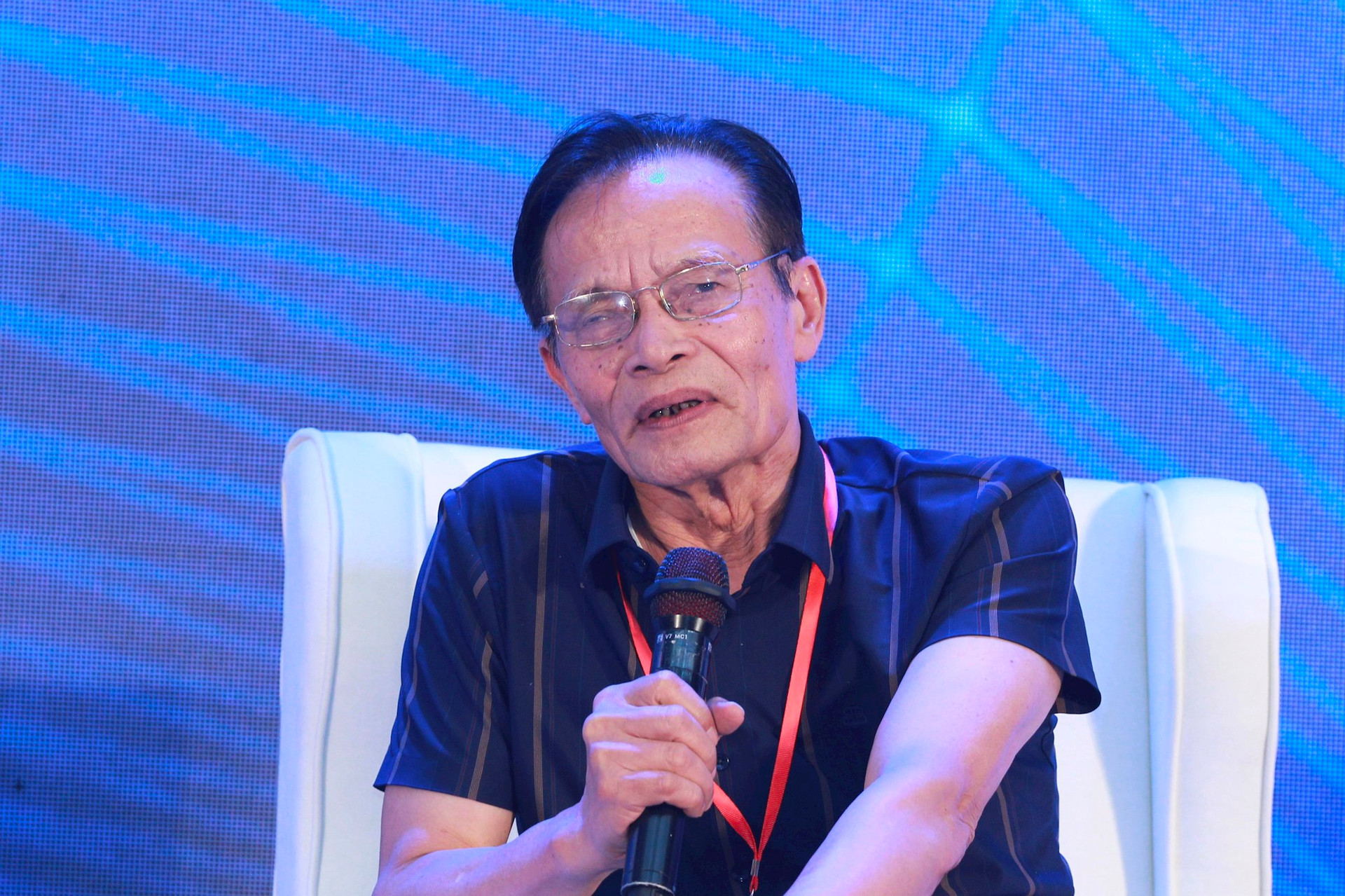
"Green development is a requirement for developed countries, creating significant pressure on the production systems of developing countries while ensuring the safety of the global environment," said Mr Nghia.
Furthermore, the bank seeks ecologically friendly and responsible operations in addition to applying an environmental and social management system to its green loan portfolio through its overall lending strategy. Nam A Bank has consistently expanded its range of green finance offerings over time, concentrating on the clean energy, renewable energy, and electric car industries.
The general director of HDBank, Mr Pham Quoc Thanh, emphasised that the bank looks for foreign financial resources in the agriculture sector to promote high-tech agricultural credit, including funding large-scale value chains like CP and Loc Troi. Additionally, HDBank is a frontrunner in the commercial banking industry for green lending, sustainable agriculture, and rural development, consistently implementing a range of useful incentive programmes.
Growth and Improvement of Green Capital
As of mid-2023, the outstanding green credit balance of the entire system was around VND 530,000 billion, or 4.2% of the overall outstanding balance of the banking system, according to the most recent statistics provided by the State Bank of Vietnam. Commercial banks have aggressively worked with climate change funds and international financial institutions to secure green capital, which has been brought to Vietnam for lending. This helps to increase the potential for future green capital provision.
Green money generally has interest rates that are around 2% cheaper than those of traditional capital sources, giving borrowers a big advantage in making their products more competitively priced. According to VinaCapital Investment Group CEO Don Lam, companies need to progressively implement a greening process for their manufacturing activities, starting with input materials and ending with resource-saving techniques, to obtain green capital. Through targeted actions and credits, they can also convert waste into input resources, resulting in more environmentally friendly production.
Vietnam's foreign trading partners are calling for a greater decrease in carbon emissions during the production process, according to the Ministry of Industry and Trade. Among these, the European Green Deal (EGD), which will control the production activities of companies exporting goods to the EU market, has attracted a lot of interest due to its new criteria.
Essential to the EGD is the Carbon Border Adjustment Mechanism (CBAM). Through this approach, the carbon tax that the EU would levy on all items that are imported into the market will be determined by the intensity of greenhouse gas emissions during the exporting country's production.
Nghe Nhan
Related news
- Connecting Leaders, Shaping the Future: Strategic Leadership Planning Meeting – CorporateConnections Hanoi A
- Sunlight - Unilever Vietnam Recognized for Outstanding Contributions to the National Initiative Supporting Women Entrepreneurs
- Deputy Prime Minister Nguyễn Chí Dũng: “The country’s major challenges weigh heavily on my mind — and we must resolve them together.
- Unitsky String Technologies signs cooperation agreements with three Vietnamese partners, opening a new direction for smart mobility and sustainable development
- When artists do business – livelihood is no poetry!
- Before the D‑day to abolish flat‑rate tax: Fear of technology and costs leave small traders struggling to adapt
- Vietnamese enterprises at a crossroads: the impact of a potential US–China deal
- "Digital technicians" must not be forgotten if Vietnam aims to meet its strategic goals
- HDBank: Impressive profit growth, leading in profitability and advancing international integration
- TNI King Coffee sued for over VND 5 Billion in unpaid debts
- VINASME and Jeonnam Technopark Sign MOU on technology cooperation, human resource training, and trade promotion
- Vietnamese entrepreneurs strengthen ASEAN connectivity in the digital iIntegration era
- Prime Minister: Vietnam aims to become a regional logistics hub
- Vietnam upgraded to Secondary Emerging Market by FTSE Russell
- Hanoi’s economy grows 7.92% in first nine months of 2025, FDI surges nearly threefold
- Vietnam’s strong gdp growth fails to ease labor market distress
- US tariffs on Brazil propel Vietnam’s pangasius into global spotlight
- VietLeap AI Accelerator launches: A strategic springboard for Vietnam’s AI startups
- CICON expands strategic alliances: A new step forward in Vietnam–Korea business connectivity
- What must Vietnamese enterprises do to maintain their position in the global supply chain?
Đọc thêm Business
Connecting Leaders, Shaping the Future: Strategic Leadership Planning Meeting – CorporateConnections Hanoi A
"Your network is your most powerful flowing asset. It generates value, multiplies opportunities, and accelerates your influence across borders."
Innovative ESG enterprise: Trạm Xe Việt startup proposes solutions to build a green mobility ecosystem
As Vietnam commits to achieving Net Zero by 2050 and tightens emissions standards, the transportation sector faces unprecedented pressure to transform.
Deputy Prime Minister Nguyễn Chí Dũng: “The country’s major challenges weigh heavily on my mind — and we must resolve them together.
On the morning of November 26, 2025, Deputy Prime Minister Nguyễn Chí Dũng chaired a high-level working session at the National Innovation Center (NIC) in Hòa Lạc.
Unitsky String Technologies signs cooperation agreements with three Vietnamese partners, opening a new direction for smart mobility and sustainable development
The signing ceremony took place in Minsk, Belarus, on November 28, 2025.
Before the D‑day to abolish flat‑rate tax: Fear of technology and costs leave small traders struggling to adapt
From 1 January 2026 the flat‑rate tax regime will be abolished. Small business households will be required to declare tax based on actual revenue. MISA supports the transition with technology to help micro‑merchants adapt smoothly and transparently.
Vietnamese enterprises at a crossroads: the impact of a potential US–China deal
As the world closely monitors every shift in US-China relations, emerging signals of a strategic agreement between the two global powers are raising hopes for global economic stability.
HDBank: Impressive profit growth, leading in profitability and advancing international integration
Ho Chi Minh City Development Joint Stock Commercial Bank (HDBank, stock code HDB) announced its consolidated profit before tax for the first 9 months of 2025 reached VND 14,803 billion, marking a 17% increase year-on-year (YoY).
TNI King Coffee sued for over VND 5 Billion in unpaid debts
On October 21, 2025, the People’s Court of District 10 in Ho Chi Minh City officially accepted a civil lawsuit concerning a commercial contract dispute between TKT Vietnam Plastic Packaging Joint Stock Company and TNI King Coffee Co., Ltd.
VINASME and Jeonnam Technopark Sign MOU on technology cooperation, human resource training, and trade promotion
On October 15, 2025, in Hanoi, VINASME and Jeonnam Technopark (Korea) signed an MOU to promote trade, advance technology transfer, and develop human resources between enterprises of both nations.
Vietnamese entrepreneurs strengthen ASEAN connectivity in the digital iIntegration era
On the occasion of Vietnam Entrepreneurs’ Day (October 13), an international event themed “Integration – Innovation – Sustainable Development” was solemnly held in Ho Chi Minh City.


